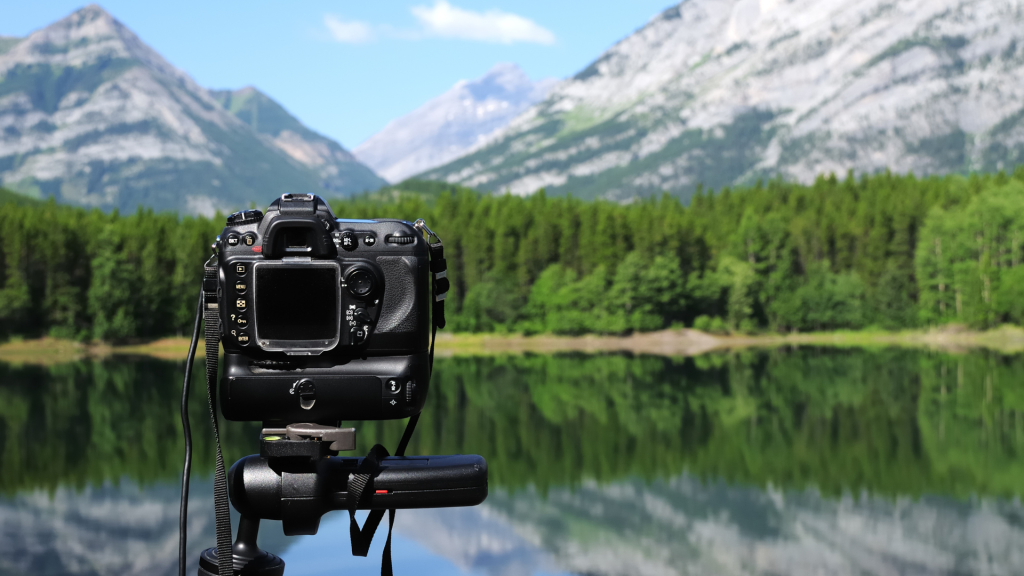Landscape photography is a great way to hone our photographic abilities. This type of photography captures stunning images of landscapes and scenery and can be an enriching pursuit. In this blog post, we’ll discuss the basics of landscape photography and give us some inspiration for capturing stunning shots. We’ll also provide some tips on how to improve our skills as a photographer. So read on to learn more about this fascinating genre of photography.
Discovering the Beauty of Landscape Photography
Landscape photography is one of the most popular forms of photography. It can be quite an intimidating process to learn. Still, with the right tools and techniques, it can be a rewarding experience. Here are some tips to help us get started:
- We can start by taking photos in our backyard or local park. This will help us get a feel for what kind of landscape photojournalism looks like and how we want to shoot it.
- Buy a good camera. A good camera will make the photos look better and allow us to take more detailed photos. The best cameras have high-resolution sensors and offer good image quality in low-light situations.
- Learn about composition and framing. Landscape photos are often composed in various ways, so it’s essential to understand how to put them together to create a cohesive photo series or album. Pay attention to elements such as leading lines, foregrounds, and backgrounds. Framing can also add impact and emotion to our photos.
- Be patient while shooting landscapes. Sometimes the perfect shot won’t come easy – patience is key! If we start snapping pictures without giving ourselves time to think about what might work well, we may end up with mediocre photos instead of beautiful ones.
- Experiment with different shutter speeds and exposure times – these two settings can affect the look of our photos. Experiment until we find what works best for each situation.
- Take our time looking at our photos after we’ve taken them. Let the images sink in for a few minutes before deciding what to do with them. This will help us to appreciate the beauty of landscapes better and make better decisions about how to shoot them next time.
- Be patient with post-processing. Landscape photos often benefit from post-processing – this means adjusting our photos’ brightness, contrast, saturation, and hue. Experiment until we find the best result of the photo that we’re happy with.
Choosing the Right Camera Settings for Landscape Photography
Landscape photography is a genre that captures nature’s beauty and harmony. When photographing landscapes, it’s essential to consider factors like camera settings, composition, and lighting. The aperture is the size of the lens’s opening and affects how much light enters the camera. For landscape photography, we’ll use a wide aperture (low f-stop number), allowing more light into the camera to capture details in the scene.
Shutter speed is how long the camera shutter stays open to capture photos. For landscapes, we’ll be using a slow shutter speed (high number) to blur the motion in the scene and create a motionless effect. ISO sensitivity affects how sensitive the camera’s sensor is to light and determines how much noise will be introduced into the photo while shooting in low light conditions or at night. For landscapes, use an ISO setting that’s high enough so that there isn’t too much noise but not so high that it causes blurry photos due to grainy images.
In manual mode, we have complete control over our camera’s settings, giving us more flexibility when taking landscape photos. Overall, the main camera settings we’ll want to consider when shooting landscapes are aperture, shutter speed, ISO sensitivity, and manual mode.
The Power of Light and Color in Landscape Photography
Landscape photography is one of the oldest forms of photography. It can be an excellent and creative way to capture a scene. Many different techniques can be used to create great landscape photos, and using light and color is one of the most critical aspects of this type of photography.
One of the best ways to use light in landscape photography is to use sunlight as the primary light source. When we shoot in sunlight, we will get natural-looking colors that are beautiful and inspiring. We can also use artificial light in landscape photography to create unique effects, but sunlight is always the best option because it looks so natural.
Another great way to use light in landscape photography is to use dusk or dawn as the primary lighting source. At these times of day, the sky will start to turn a different color, which can be a beautiful backdrop for the photo. We can also use light from lamps or fires to create unique effects, but dusk or dawn are always my favorite times for this type of photography.
The Art of Framing the Landscapes
Landscape photography is about capturing stunningly beautiful landscapes without traveling to them. We can use many different techniques to compose the shots, but the key is to find the one that works best for our subject and style.
One of the most common ways to frame a landscape is to use a Rule of Thirds grid. This simple principle states that we should divide the picture into thirds vertically and horizontally and place subjects on either side of the center line. This will help keep everything focused while giving our picture depth and dimension.
Another strategy is to use foreground elements to draw the viewer inwards, creating a sense of space and isolation. By placing large rocks or trees in front of a vista, we can create an appearance of depth and mystery. Feel free to experiment with framing; sometimes, it’s best to go with instinct and take photos that feel right rather than trying to conform to a specific template.
Start Snapping Stunning Photos
If we’re looking to capture the beauty of landscapes, whether it be in stills or video, there are a few key things to keep in mind. This article provides everything we need to get started with landscape photography, from composition and lighting to post-processing techniques. So what are we waiting for? Start snapping those stunning photos!

